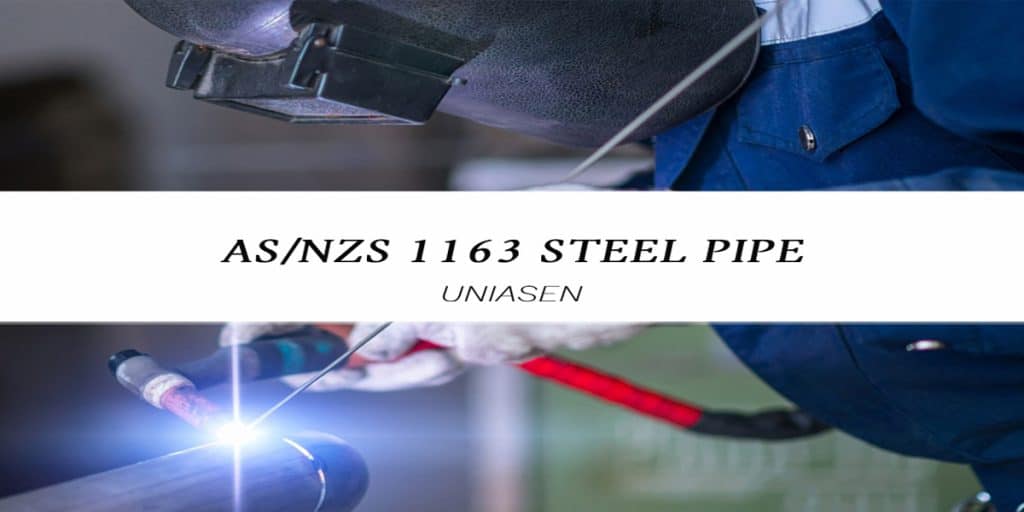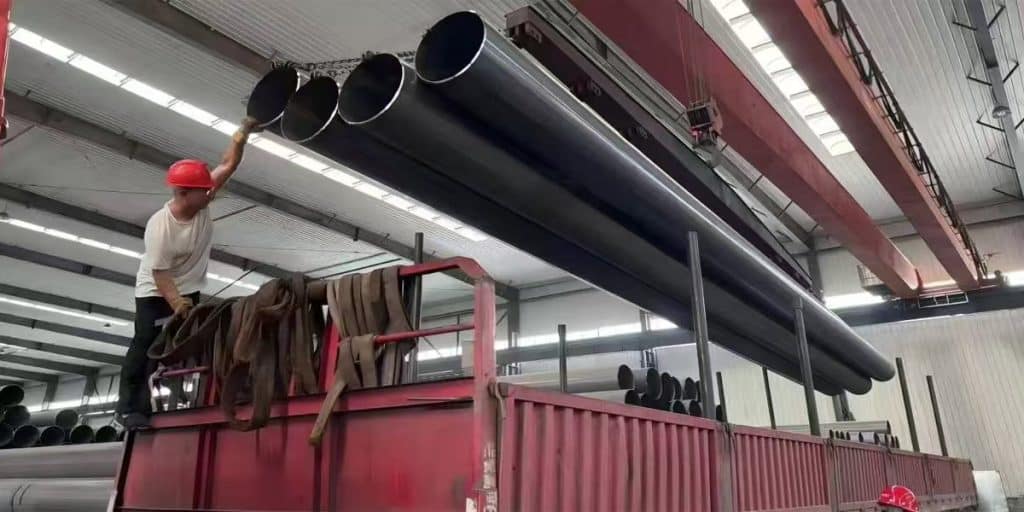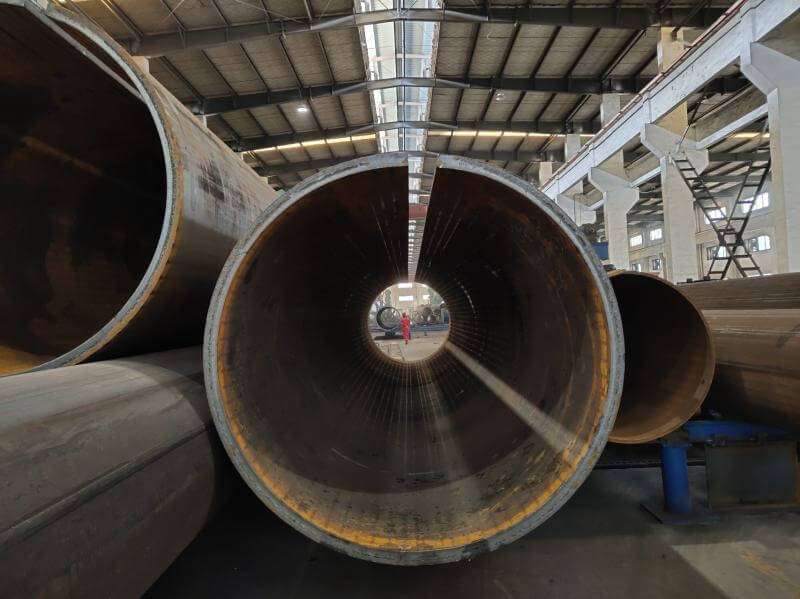In today’s industrial market, where the demand for high-performance piping materials continues to rise, ASTM A672 steel pipes are widely used in critical sectors such as power generation, petrochemical, and district heating projects due to their excellent weldability and suitability for medium to high-pressure applications. However, with increasingly stringent inspection standards and higher expectations for safe and stable system operation, it has become essential for manufacturers to implement a scientific and systematic quality control process throughout production. From raw material selection to final delivery, ASTM A672 pipes undergo a series of rigorous pipeline inspection procedures—including chemical composition analysis, mechanical testing, and non-destructive examinations—to ensure compliance with specifications and project requirements. This article explores the key quality control practices and primary inspection methods for ASTM A672 steel pipes, helping industry professionals better manage product reliability and application risks!
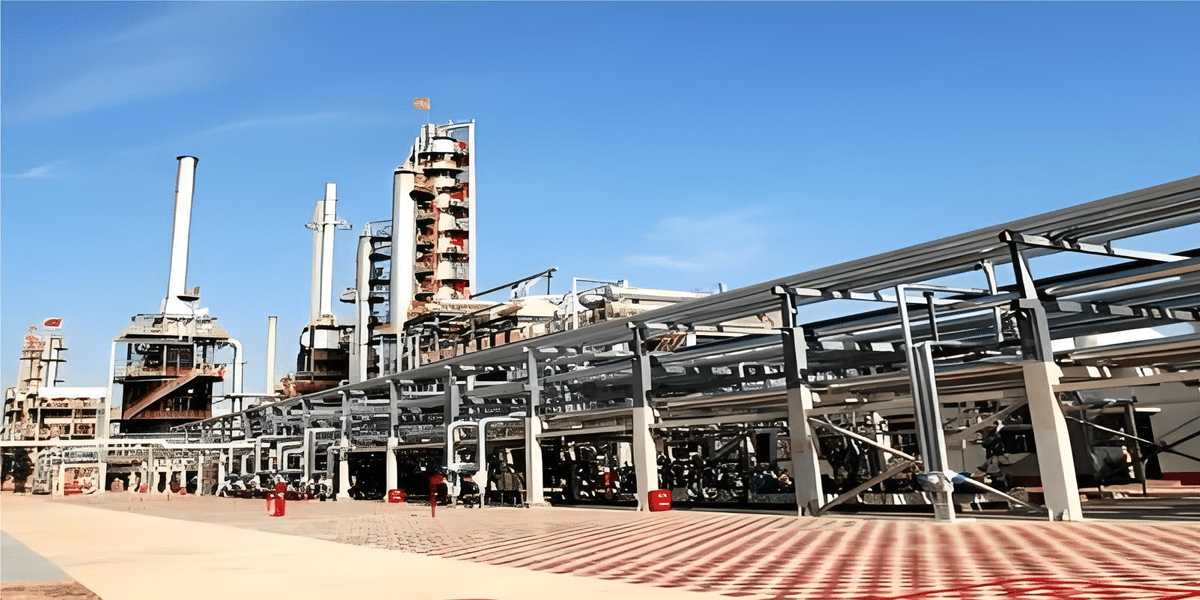
ASTM A672 Steel Pipes: Basic Characteristics and Application Background
1. Key Characteristics of ASTM A672 Steel Pipes
1. Standard Definition
ASTM A672 is a specification for electric-fusion-welded steel pipes intended for high-pressure service, particularly when post-weld heat treatment and non-destructive examination are required.
These pipes are typically manufactured using double-submerged arc welding (DSAW), offering excellent structural integrity and weld consistency.
2. Material Composition & Heat Treatment
Produced from various carbon steel grades (e.g., Grade B60, C60), followed by post-weld heat treatment processes to enhance strength and toughness.
Heat treatments may include normalization, tempering, or other procedures as per project specifications, supporting strict quality control.
3. Superior Weldability: Weld seams are regulated under established welded steel pipe inspection specifications, ensuring mechanical properties across the weld zone are equivalent to the base material.
4. Support for Non-Destructive Examination: Pipes can undergo tailored ASTM A672 non-destructive testing procedures, such as ultrasonic testing (UT) or radiographic testing (RT), to meet high-level pipeline inspection requirements.
2. Application Background of ASTM A672 Pipes
1. Suitable for High-Temperature and High-Pressure Environments
Widely used in petroleum, power generation, chemical processing, and boiler systems for pressure piping that must withstand corrosion, thermal expansion, and dynamic pressure conditions.
Recognized within many pressure pipeline testing standards as a reliable material for critical flow systems.
2. Preferred Material for Infrastructure Projects: Ideal for steam pipelines in power plants, mainline oil and gas transmission, offshore platforms, and other scenarios demanding strength and durability.
3. Compliance with International Inspection Standards: Fully compliant with ASME, API, EN, and other international inspection standards, making it a popular choice for export and cross-border engineering projects.
4. Customizable Testing Requirements: Project stakeholders can specify additional pipeline inspection measures or third-party certifications, including full-length radiographic tests or metallographic analysis, to ensure regulatory and functional compliance.
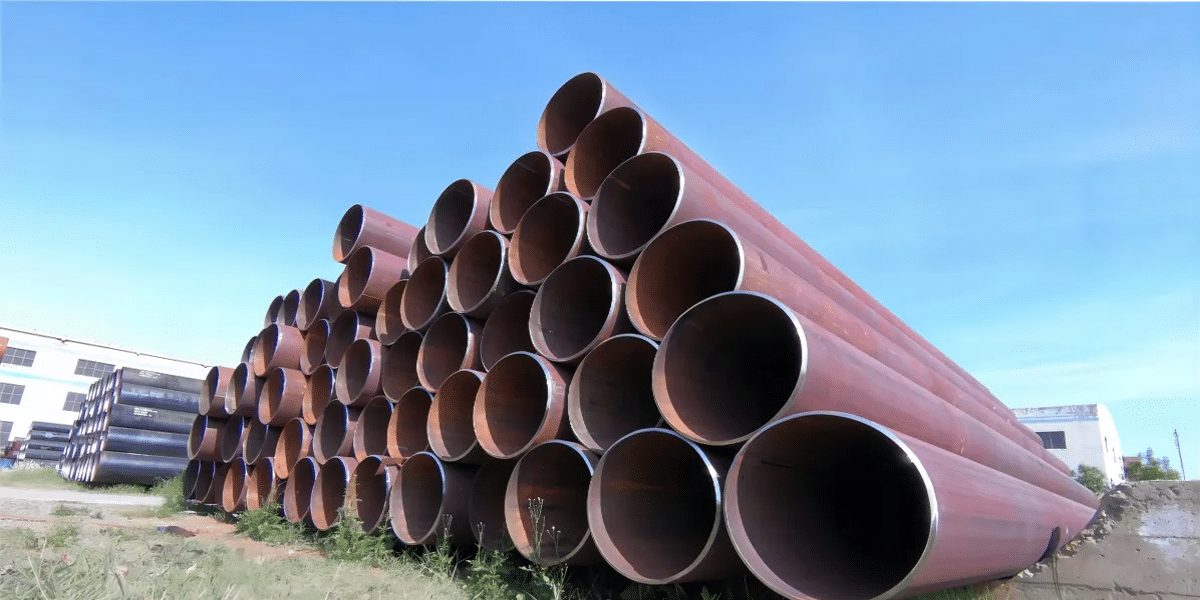
ASTM A672 Steel Pipes Quality Control Process
To ensure the safety and stability of ASTM A672 steel pipes under high pressure, high temperature, and critical transport conditions, a comprehensive quality control system must be implemented throughout the manufacturing process, covering raw materials, welding, heat treatment, inspection, and packaging.
1. Raw Material Inspection
The steel plates used must meet the chemical composition and mechanical properties requirements specified by ASTM A672;
Incoming materials undergo chemical analysis and tensile testing to comply with international inspection standards;
The quality control department performs batch sampling inspections regularly to eliminate low-quality risks.
2. Welding Process Control
The double-submerged arc welding (DSAW) process is used to ensure weld seam density and uniformity;
According to welded steel pipe inspection specifications, every weld seam is monitored and preliminarily tested;
Welders must be certified and pass welding procedure qualification (WPS, PQR).
3. Post-Heat Treatment Quality Control
After welding, pipes undergo heat treatment (such as normalization, tempering) to relieve welding residual stress;
The heat treatment temperature profile is strictly controlled and recorded to ensure uniformity;
Mechanical properties and dimensional inspections are re-checked after heat treatment to verify stability.
4. Non-Destructive Testing (NDT) Process
The ASTM A672 non-destructive testing procedures are performed according to project requirements, typically including:
Ultrasonic Testing (UT): To detect internal defects in welds and base metal;
Radiographic Testing (RT): To identify slag inclusions, lack of fusion, and other welding defects;
Magnetic Particle Testing (MT) or Penetrant Testing (PT): For surface defect detection;
Inspectors must hold certification from third-party institutions (e.g., ASNT).
5. Dimensional and Visual Inspection
Each pipe is inspected for outer diameter, wall thickness, ovality, length, bevel angle, etc.;
Ensures compliance with relevant pressure pipeline testing standards and customer specifications.
6. Pipeline Testing and Final Quality Verification
Conduct hydrostatic or pneumatic pressure tests to verify the pipe’s sealing and structural integrity under specified pressure;
Provide comprehensive pipeline inspection reports, material test certificates (MTC), and third-party inspection certificates (e.g., SGS, BV);
Only pipes that pass all inspections proceed to corrosion protection, packaging, and shipment.
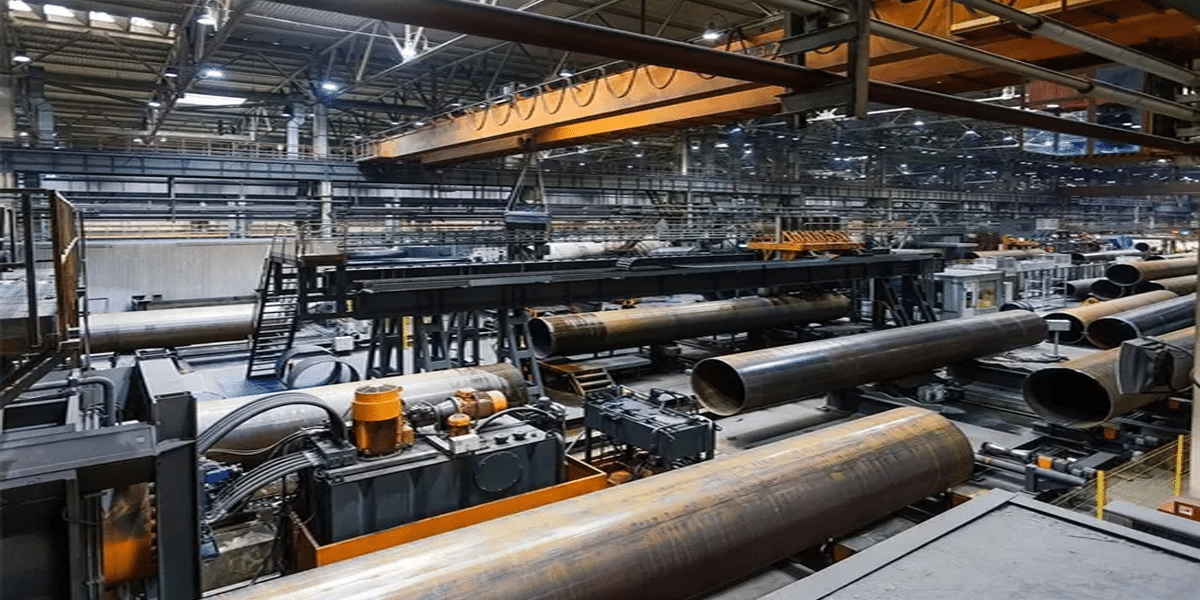
Inspection Methods and Execution Standards for ASTM A672 Pipes
1. Inspection Methods
Visual Inspection: Examine the pipe surface for cracks, scratches, dents, and obvious weld defects.
Dimensional Inspection: Measure the pipe’s outer diameter, wall thickness, length, ovality, and bevel angle to ensure compliance with design and standards.
Nondestructive Testing (NDT)
Ultrasonic Testing (UT): Detect internal defects such as slag inclusions, porosity, and cracks.
Radiographic Testing (RT): Comprehensive inspection of weld quality to identify lack of fusion, slag inclusions, and other welding defects.
Magnetic Particle Testing (MT) and Penetrant Testing (PT): Detect surface cracks and other surface defects.
Mechanical Testing: Includes tensile tests, impact tests, hardness tests, etc., to verify the mechanical properties of the material meet standards.
Pressure Testing: Hydrostatic or pneumatic testing is performed to ensure the pipe can withstand the specified operating pressure without leakage or rupture.
2. Execution Standards
ASTM A672 Standard: Specifies manufacturing, inspection, and acceptance requirements for pipes, including chemical composition, mechanical properties, welding process, heat treatment, and various testing methods.
Relevant International Standards
ASME Boiler and Pressure Vessel Code
API 5L (for pipeline transport)
EN 10217 (welded steel pipes standard)
Inspection Specifications
Welded Steel Pipe Inspection Specifications: Detailed requirements for weld quality and inspection procedures.
Pressure Pipeline Testing Standards: Define pressure test methods and acceptance criteria for pipelines.
How to Ensure the Long-term Reliability of ASTM A672 Steel Pipes?
1. Implement a Standardized Production System
Strictly follow the ASTM A672 standard during production to ensure raw materials, welding, heat treatment, and other processes meet technical specifications;
Establish a complete production process and quality management system (such as ISO 9001) to control every stage;
Utilize advanced automated equipment and online monitoring technologies to reduce human errors and improve manufacturing consistency.
2. Third-Party Supervision, Inspection, and Quality Certification
Engage authoritative third-party inspection agencies (e.g., SGS, BV, TÜV) for incoming material inspection, production audits, and finished product testing;
Obtain and maintain relevant quality certification certificates to enhance product credibility and market acceptance;
Third-party supervision helps identify potential quality issues promptly, ensuring compliance with inspection standards and industry requirements.
3. Regular Re-inspection and On-site Sampling Inspection
After shipment, customers and manufacturers should perform regular nondestructive testing (such as ultrasonic testing and radiographic testing) on in-service pipes;
On-site sampling inspections ensure batch consistency and stability, detecting potential corrosion, cracks, or other hazards in time;
Based on inspection results, plan maintenance or replacement to prevent accidents and ensure system safety.
4. Lifecycle Management Recommendations
Establish a full traceability system covering procurement, production, transportation, installation, operation, and decommissioning stages to achieve transparent information management;
Apply IoT and intelligent monitoring technologies to track pipeline operating status in real time and provide early warnings of abnormalities;
Develop detailed maintenance and emergency response plans to extend pipe service life and reduce operational risks.
Ensuring the long-term reliability of ASTM A672 steel pipes relies not only on strict quality control and scientific inspection methods but also on systematic lifecycle management and continuous improvement. As the market demand for high-performance steel pipes continues to grow, implementing standardized production systems, introducing third-party supervision and inspection, conducting regular re-inspections, and adopting intelligent management will be key to guaranteeing safe and stable pipeline operation.
If you want to learn more about ASTM A672 steel pipes, professional knowledge, and industry updates, please like and follow us to stay updated with the latest information on quality control, pipe inspection, and inspection standards. Thank you for your support and trust!

